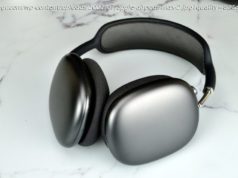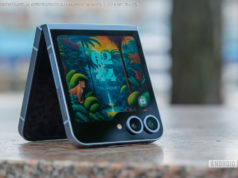The Nokia 7.1 was launched in a surprise move by Nokia at its London event yesterday, on October 04 and it adds to Nokia’s growing line-up of mid-range smartphones. The other Nokia handsets that are available globally and have similar specifications are the lovely-looking Nokia 6.1 Plus and the faster option Nokia 7 Plus. All three…
The Nokia 7.1 was launched in a surprise move by Nokia at its London event yesterday, on October 04 and it adds to Nokia’s growing line-up of mid-range smartphones. The other Nokia handsets that are available globally and have similar specifications are the lovely-looking Nokia 6.1 Plus and the faster option Nokia 7 Plus. All three of these handsets were launched under the Android One programme, which gives them two full years of promised security and other software updates.
In fact, all three of these handsets come with Android Oreo in stock version and are going to receive an upgrade to Android 9 Pie. We have reported that Nokia has, at the same launch event, confirmed a Pie upgrade for the Nokia 6.1 Plus in October itself. The Pie update has started rolling out for Nokia 7 Plus, but since it is an OTA update, not all devices may have received it yet. In this article, we shall compare in detail what’s new and what’s not between the three Nokia mid-range Android One handsets.
The first thing that stands out in a comparison of these three handsets is that the Nokia 7 Plus does not have a notched display, neither does it sport a glass back. Being launched much earlier in 2018, it gets a more conventional design, although, it has the more prominent copper edges in comparison. The Nokia 7 Plus has an aluminium 6000 series unibody, while the other two have an aluminium frame and glass back. All three of them, however, come with IPS LCD displays, with the Nokia 7 Plus getting the tallest 6-inch unit, followed by the Nokia 7.1 with its 5.84-inch display and the Nokia 6.1 Plus ( review) with its 5.8-inch display.
All three of them get Full HD+ screen resolution, but the pixel density of the two newer phones is better at 432 ppi as compared to the older Nokia 7 Plus, with gets 403 ppi. Also, since the two newer handsets get a notched display in the 19:9 ratio as compared to the Nokia 7 Plus’s 18:9 display with bezels, their screen-to-body ratio is better. The Nokia 6.1 Plus gets the best screen real estate, because it is the smallest among the three, although, the new Nokia 7.1 is only marginally bigger and heavier. All three handsets get the same Corning Gorilla Glass 3 protection, but the new Nokia 7.1 has an HDR10 compliant display.
As mentioned earlier, all three of these handsets boot Android 8.1 Oreo in stock version, and will soon get Android 9 Pie updates. The new Nokia 7.1 has the same chipset powering it as the Nokia 6.1 Plus: the 1.8GHz Qualcomm Snapdragon 636 octa-core. While this is a nice mid-range processor and is quite new, the Nokia 7 Plus has a speedier and more power efficient Snapdragon 660 octa-core chipset that is clocked at 2.2GHz. All three of these phones get a 4GB RAM with 64GB internal storage, and only the new Nokia 7.1 gets a 3GB+32GB alternative. None of these three provide a dedicated microSD card slot, as they all come with the same Hybrid dual-SIM setup.
Just like the Nokia 7 Plus, the new Nokia 7.1 flaunts Zeiss optics. The Nokia 6.1 Plus does not get this tech but have a 16MP+5MP dual rear camera, while the new Nokia 7.1 has a 12MP+5MP dual rear camera. The Nokia 7 Plus has a more powerful 12MP+13MP dual rear camera. Also, the Nokia 7 Plus has a 16MP Zeiss lens for the front camera, the Nokia 6.1 Plus has a 16MP regular sensor, and the new Nokia 7.1 gets an 8MP front camera without Zeiss tech. The Nokia 7 Plus and Nokia 7.1 Plus both get dual pixel phase detection autofocus, but only the older Nokia 7 Plus gets 2x optical zoom.
The new Nokia 7.1 gets the same 3060mAh battery as the Nokia 6.1 Plus, but the Nokia 6.1 Plus has Qualcomm’s QuickCharge 3.0 support while the new Nokia 7.1 gets 18W fast charging. The Nokia 7 Plus also gets 18W fast charging but it has a much larger 3800mAh battery. All three of these mid-range Nokia handsets get a 3.5mm audio jack, Type-C USB, Bluetooth 5.0 Low Energy, dual-band WiFi, and rear-mounted fingerprint sensor. The Nokia 6.1 Plus misses out on NFC but the other two handsets have it.
To conclude, all three of these handsets are quite similar to each other, and while the Nokia 6.1 Plus is a prettier handset with a small package and a notched display with glass back, the new Nokia 7.1 improves on it in some ways, such as with Zeiss optics. However, the new handset does not have a powerful front camera, and gets the same chipset and display as the Nokia 6.1 Plus, so it cannot be said to have improved significantly. Also, several potential buyers have pointed out that the bottom bezel on the Nokia 7.1 is a bit too thick for its own good.






